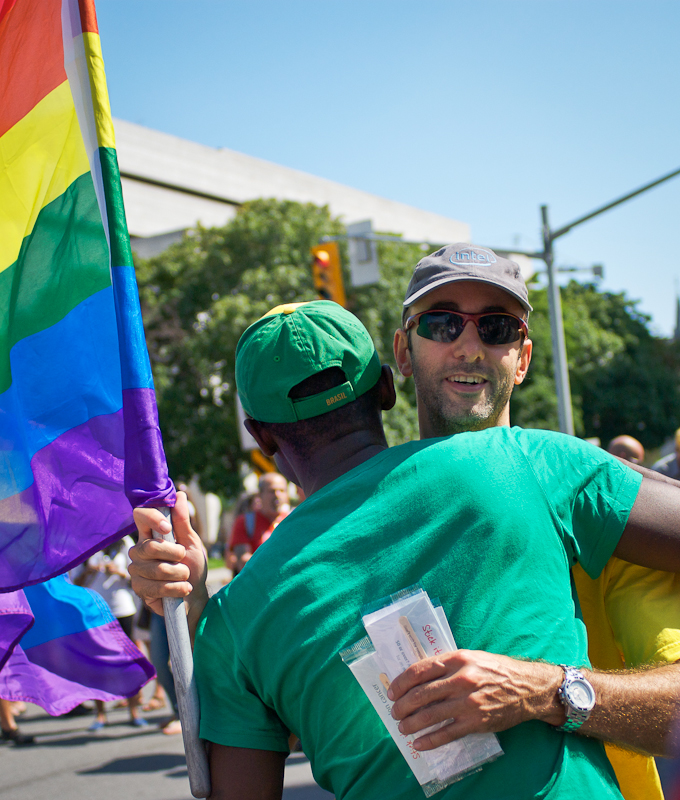Crowds of every age, gender, and race lined up to catch a glimpse of the annual Capital Pride parade as it marched through Ottawa’s downtown core Aug. 26.
Participants held nothing back. Many were dressed in radiant colours and carried rainbow flags. Although the audience varied, there was one common factor that drew everyone together: love.
Queer couples proudly displayed public signs of affection, such as holding hands, and small, quick kisses.
Some held signs with messages that read “Love is a human right,” “Love takes courage,” and “Everyone is equal.”
“Pride parades are in honour of the Stonewall riots in New York City in 1969,” said Jeremy Dias, founder and director of Jer’s Vision, an organization that works with youth to end bullying and discrimination against those who identify as GLBTQ. “Gay men and women literally had to fight for their rights, so the pride parades are a way of remembering them,” he said.
There were also many student groups in attendance, including the Carleton’s GLBTQ Centre for Sexual and Gender Diversity.
Dias said he believes that university provides GLBTQ students “an amazing opportunity to be themselves, [and] explore their sexuality and freedom since most students live away from home.”
“GLBTQ students go through a very different process [compared to GLBTQ members of different age groups], but in university there are so many services to support you, as compared to high school,” he said.
Amy Mannseichner, a fourth-year linguistics student from Carleton and member of Carleton’s GLBTQ centre, was one of the students at the parade.
She said the parade is an important chance for GLBTQ students to educate others that although they may have more supports than they did in high school, they still face many issues.
“[For example], in an anthropology class I took I’ve just had profs gloss over sexuality like it’s not a thing,” she said.
“Or people assume my peers are a certain gender.”
Although many people may think more liberally in a university setting, many don’t realize when they aren’t being inclusive, Mannseichner said.
“A prof might say ‘ladies and gentlemen’ or divide classes by gender. Or you get asked about what your boyfriend did for Valentine’s Day.”
“I don’t think there are enough systems in place to help educate [everyone in a university community],” she said, pointing out that safe space training is often not mandatory.
The parade also included several church groups, including the Anglican Church of Canada. While there was a strong sense of equality and solidarity, not everyone was supportive of the festivities.
At the end of the parade, four men wearing crosses walked down the street carrying large signs which listed Biblical passages denouncing homosexuality.
Some bystanders said they felt that this action crossed a line.
Sheridan College student Lauren Cardarelli said she was disappointed with the group’s demonstration.
“That was the only bad part [of the parade],” Cardarelli said.
Her friend and Carleton student Stephanie Mannell added that she felt the parade was meant to be a place for others like her to feel welcome.
“You don’t see us going to their mass and making out,” she said. θ






